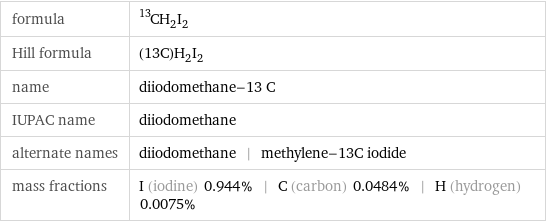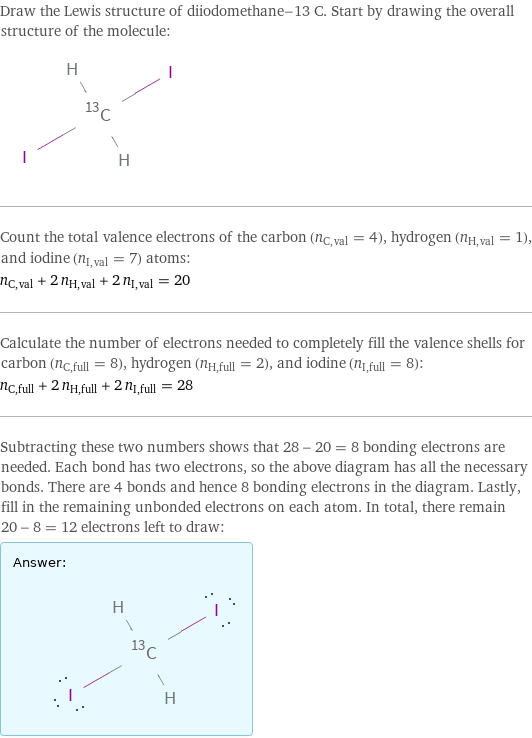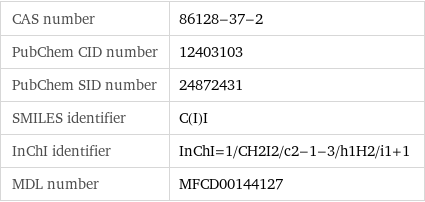Input interpretation

diiodomethane-13 C
Chemical names and formulas

formula | ^13CH_2I_2 Hill formula | (13C)H_2I_2 name | diiodomethane-13 C IUPAC name | diiodomethane alternate names | diiodomethane | methylene-13C iodide mass fractions | I (iodine) 0.944% | C (carbon) 0.0484% | H (hydrogen) 0.0075%
Lewis structure

Draw the Lewis structure of diiodomethane-13 C. Start by drawing the overall structure of the molecule: Count the total valence electrons of the carbon (n_C, val = 4), hydrogen (n_H, val = 1), and iodine (n_I, val = 7) atoms: n_C, val + 2 n_H, val + 2 n_I, val = 20 Calculate the number of electrons needed to completely fill the valence shells for carbon (n_C, full = 8), hydrogen (n_H, full = 2), and iodine (n_I, full = 8): n_C, full + 2 n_H, full + 2 n_I, full = 28 Subtracting these two numbers shows that 28 - 20 = 8 bonding electrons are needed. Each bond has two electrons, so the above diagram has all the necessary bonds. There are 4 bonds and hence 8 bonding electrons in the diagram. Lastly, fill in the remaining unbonded electrons on each atom. In total, there remain 20 - 8 = 12 electrons left to draw: Answer: | |
Basic properties

molar mass | 268.828 g/mol phase | liquid (at STP) melting point | 6 °C boiling point | 68 °C (measured at 1466 Pa) density | 3.337 g/cm^3
Units

Liquid properties (at STP)

density | 3.337 g/cm^3
Units

Non-standard atom properties

C-13 | 1
Chemical identifiers

CAS number | 86128-37-2 PubChem CID number | 12403103 PubChem SID number | 24872431 SMILES identifier | C(I)I InChI identifier | InChI=1/CH2I2/c2-1-3/h1H2/i1+1 MDL number | MFCD00144127
Safety properties

flash point | 110 °C